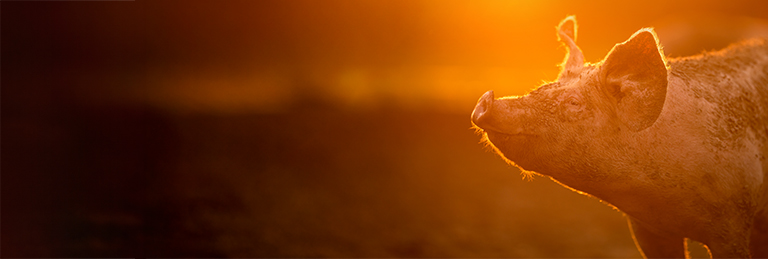If you're a backyard chicken raiser, you've become accustomed to your morning routine: Wake up. Drink coffee. Collect farm fresh eggs from your backyard flock. As the days become shorter and temperatures drop, you may notice fewer eggs when you go out to the chicken coop. It may have you wondering, “Why won't my chickens lay eggs?”
“Under ideal conditions, chickens will lay an egg once every 24 to 26 hours,” says Patrick Biggs, Ph.D., a flock nutritionist for Purina Animal Nutrition. “Hens might take a short vacation from laying eggs and the reasons range from life stage to when the sun rises and sets. Some of these reasons are natural while others can be fixed with simple changes. It's up to us as flock raisers to solve the mystery of why farm fresh eggs might be missing from the nesting box.”
Patrick Biggs, Ph.D., a flock nutritionist for Purina Animal Nutrition, says under normal conditions, hens lay an egg every 24 to 26 hours. If a production declines, look at five key areas as possible factors: daylight, environment, nutrition, molt and age.
First, confirm your hen isn't hiding her eggs and creating a nest outside the coop. Then, before you go looking for an egg thief, here are five factors to consider that can affect egg production:
1. Daylight
The first and most common cause of decreased egg production is light hours. Hens need a minimum of 16 hours of daylight to sustain strong production. Without supplemental light, they may naturally stop laying eggs due to a hormonal response as the days get shorter.
“Hens lay best when provided at least 16 hours of day light, whether natural, artificial or a combination of the two,” says Biggs. “Some flock raisers use winter as a period of rest for their hens without supplemental light. If you're looking for consistent egg production through the winter months, provide additional light to encourage your birds to keep laying.”
Biggs recommends using one incandescent 25-watt or LED 3- to 9-watt bulb per 100 square feet of coop space. If supplementing with artificial daylight, keep your flock's exposure and sleeping schedule consistent by putting lights on timers.
Daylight is one of the main factors affecting egg production in the fall and winter months. For consistent egg production, provide 16 hours of natural or artificial light to encourage birds to keep laying as shown in this photo of Purina's backyard coops on their farm in Missouri.
2. Environment
“If birds are stressed, egg production may suffer,” explains Biggs. “Stress comes in many forms – predators, over-crowding, aggressive hens, loud noises, too much heat or cold, poor nutrition and illness. Check the environment to be sure there aren't stressors in the area.”
Biggs offers advice for keeping the chicken coop stress-free:
Keep temperatures comfortable in the coop, but not drastically different than outdoors. Chickens, especially cold-tolerant breeds, can withstand winter temperatures without supplemental heat.
If you feel providing a source of heat is necessary, only raise the temperature a few degrees. Hens will adjust to the cold temperature, but if it is 70 degrees Fahrenheit in the coop and zero degrees in the run, they won't be able to regulate their body temperature.
A hen's environment plays a role in egg production. If birds are stressed, egg production can suffer. Keep them comfortable by providing one nesting box per four hens, and at least 4 square feet of indoor space and 5-10 square feet of outdoor space per bird.
3. Nutrition
Another reason for decreased egg production is over-treating and over-supplementing hens. Added treats and scraps can dilute the nutrients in a complete layer feed so the hen is less able to produce eggs consistently.
“Laying hens need 38 nutrients for consistent health and performance,” he says. “Calcium is the most critical for laying hens; she must consume four grams of calcium each day. Complete layer feeds are formulated to provide everything hens need in the correct amounts, but if we provide too many treats, then those nutrients become diluted.”
A general rule to follow is the 90/10 rule. This means the hen's diet should be made of at least 90 percent complete feed.
To produce farm fresh eggs daily, hens require 38 nutrients in a complete and balanced diet. Their diet should consist of 90 percent layer feed, while treats should be limited to 10 percent or less.
4. Molt
Around 18 months of age and annually after, chickens go through molt, which is defined as a period of feather loss and regrowth. Molt usually occurs in autumn and is associated with a decrease in egg production.
“Molting chickens redirect their energy from laying eggs to growing feathers,” explains Biggs. “This results in a brief break from egg production. Molt typically lasts eight to 16 weeks, depending on the bird. Once she has a new set of feathers, egg production should return to normal.”
To help hens through molt and return to laying eggs, Biggs recommends switching to a high protein feed during molt, like Purina® Flock Raiser. Once egg laying resumes, transition back to a layer feed higher in calcium.
Molt is the annual loss and regrowth of feathers, beginning around 18 months of age. Egg production will typically decrease or stop during this eight to 16-week period, and resume once molting has finished.
5. Hen age
Chickens begin laying eggs between 18-20 weeks of age and can lay eggs as long as her productive lifetime allows.
“People often ask us: ‘How long do chickens live?' This is a great connection to egg production. While the average lifespan of a chicken is 8-10 years, we've also seen well cared-for hens live beyond that,” Biggs says. “Just like people, as birds age they tend to slow down. Over the course of a hen's lifetime, egg production will peak at about 250-280 eggs during their first year laying eggs. After that, the number of eggs produced each year declines until she retires.”
“A hen can continue to be a valued member of your flock after her peak production has passed,” continues Biggs. “Retired hens provide great companionship and often become leaders in their flocks, showing younger birds the ropes.”
To try a layer feed that will help your hens lay strong, sign-up for Purina's new Feed Greatness™ Challenge at www.purinamills.com/flocktrial. To learn more about raising backyard chickens, go to www.purinamills.com/chicken-feed or connect with Purina Poultry on Facebook or Pinterest.
Purina Animal Nutrition LLC (www.purinamills.com) is a national organization serving producers, animal owners and their families through more than 4,700 local cooperatives, independent dealers and other large retailers throughout the United States. Driven to unlock the greatest potential in every animal, the company is an industry-leading innovator offering a valued portfolio of complete feeds, supplements, premixes, ingredients and specialty technologies for the livestock and lifestyle animal markets. Purina Animal Nutrition LLC is headquartered in Shoreview, Minn. and a wholly owned subsidiary of Land O'Lakes, Inc.







